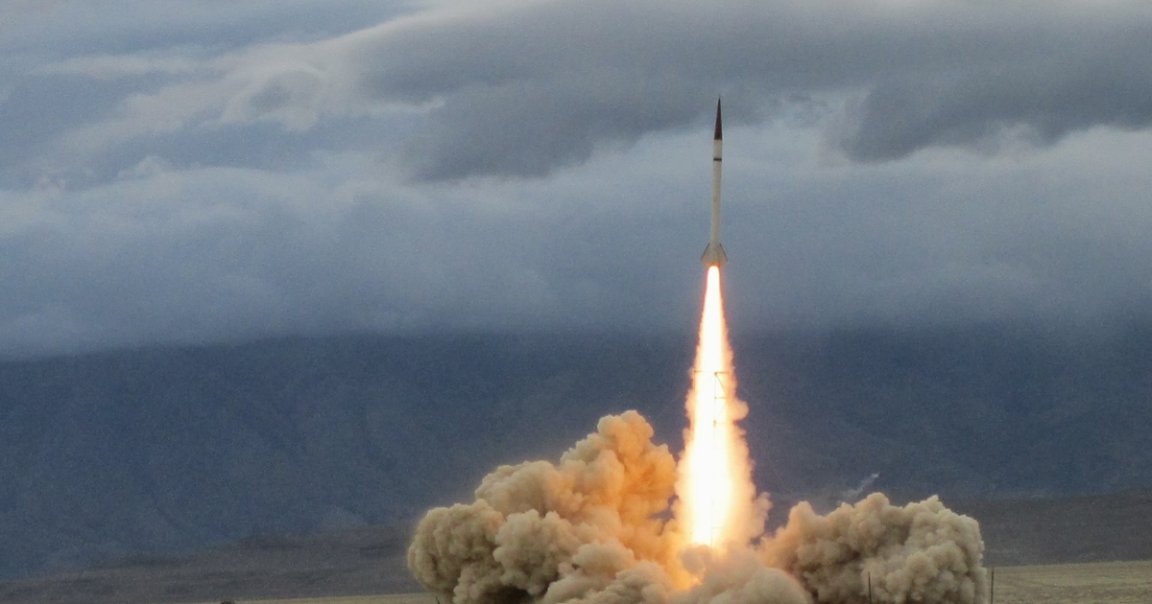
Such Great Heights
A team of students from the University of Southern California’s Rocket Propulsion Lab just successfully launched a 13-foot tall rocket called Traveler IV to past the Kármán line — the altitude of 62 miles (100 km) which is widely considered to be the boundary between Earth’s atmosphere and outer space.
It’s the first time any student-built and -designed vehicle has achieved that feat. Students around the world have been racing to achieve the same thing, as Wired reports, but the USC team got there first.

Blast Off
After reaching a max speed of Mach 5.1 and plummeting back to Earth — slowed by a set of parachutes— the rocket was still in good condition, according to official mission logs.
The rocket itself was powered by solid rocket fuel and featured only a single-stage rocket design — rather than the multi-stage layouts that split and ignite space-optimized thrusters mid-flight to reach orbit.
Flight Trajectory
The USC team’s launch didn’t go off without a hitch. They noticed “imperfections in the flight trajectory” just after launch, likely due to damage to the interior of the nozzle.
For the next launch, the team is already eyeing liquid-fuel rocket designs for bigger payload and more power.
READ MORE: A Rocket Built by Students Reached Space for the First Time [Wired]
More on rocket launches: Update: Vid Appears to Show SpaceX Capsule Exploding During Test